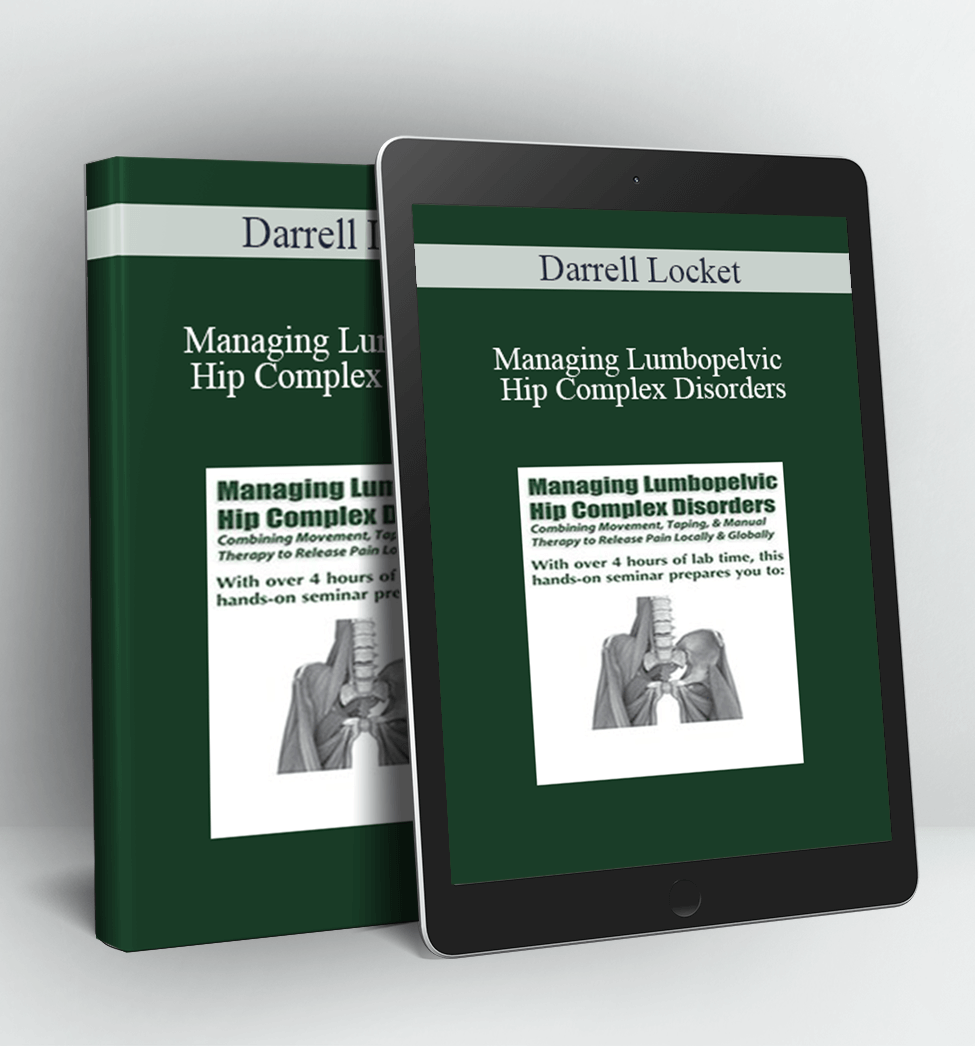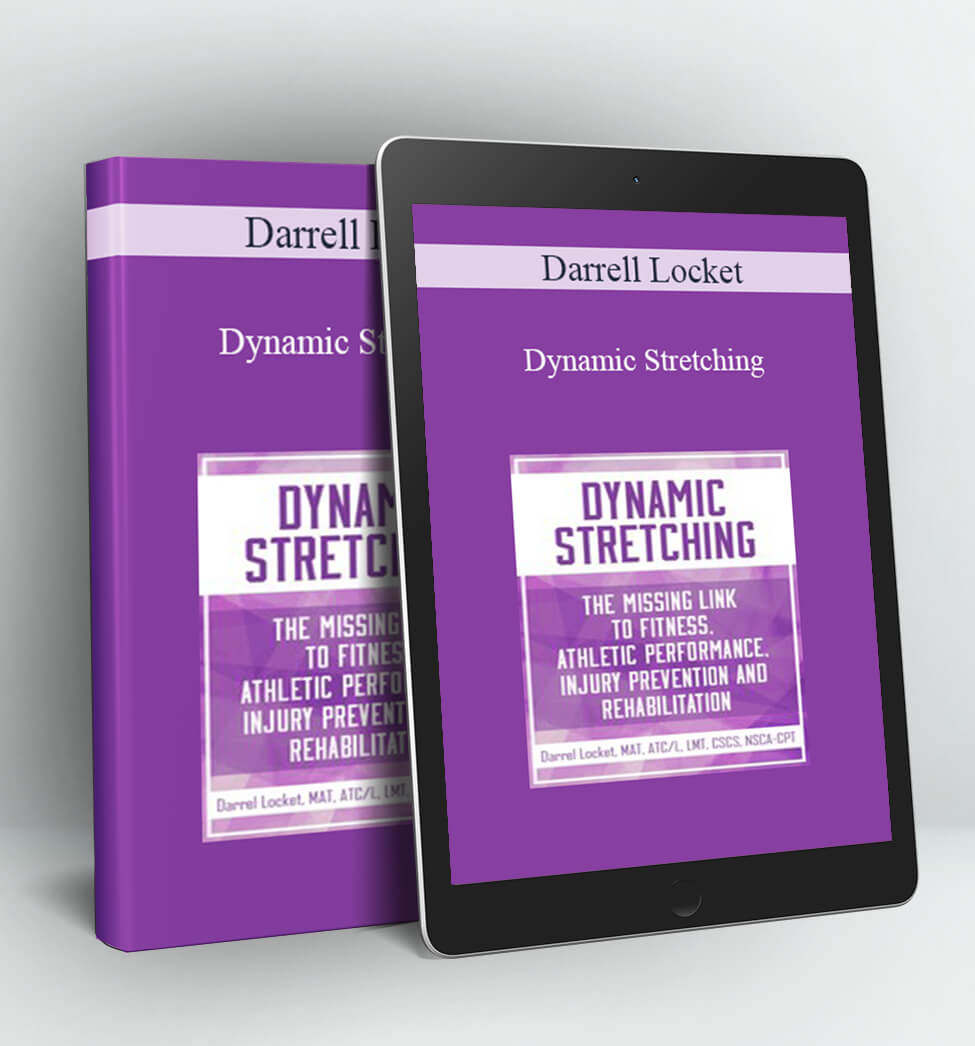MANAGING LUMBOPELVIC HIP COMPLEX DISORDERS: COMBINING MOVEMENT, TAPING & MANUAL THERAPY TO RELEASE PAIN LOCALLY AND GLOBALLY – DARRELL LOCKET
With over 4 hours of lab time, this hands-on recording prepares you to:
- Assess and treat chronic back and neck pain, hamstring tendinopathy, psoas pain, sacroiliac dysfunction, and more. Hands-on labs throughout the day show you how to determine the lumbopelvic-hip complex’s (LPHC) force-coupling joint-by-joint, covering key topics such as postural musculature analysis, orthopedic assessment, and testing of functional and dynamic movements patterns.
- Stretch, strengthen, and release tightness in the psoas major and iliacus musculature. Practice combining PNF techniques and multidisciplinary treatments to manage areas of myofibrosis and lengthen/strengthen muscles within the posterior kinetic-chain, both locally and globally.
- Correct upper- and lower-crossed syndromes. Take home evidence-based taping, exercise, and stretching regimens for postural imbalances and chronic musculoskeletal pain, in conjunction with manual therapy and instrument-assisted soft tissue mobilization (IASTM) treatment plans
- Identify and treat muscle chains, while restoring joint stability and muscular balance. Evaluate the roles of synergists, muscle slings, and myofascial trains. Then explore a comprehensive rehabilitation approach in lab, combining PNF stretching and strengthening, functional taping, joint mobilization, trigger point therapy, myofascial release, and other evidence-based interventions.
Repair sacroiliac and lumbosacral junction inter-muscular relationships between the upper and lower extremities. Discover multidisciplinary soft-tissue manipulation interventions that accelerate the healing process by breaking down adhesions, liberating contractures, lengthening tight muscles, strengthening weak muscles, and integrating functional movement patterns.
- Evaluate relative anatomy, kinesiology, mechanism, and common injuries related to the lumbopelvic hip complex (LPHC)
- Analyze standing posture, joint dynamic strength, and functional and dynamic movement using tests to identify faulty movement patterns
- Identify possible therapeutic effects of an orthopedic soft-tissue manipulation with multidisciplinary manual therapy interventions for treatment of postural dysfunctions, such as upper- and lower-crossed syndromes
- Integrate corrective taping and a home exercise/stretching regimen with manual therapy interventions to facilitate improvement in the LPHC
- Combine orthopedic massage techniques with neuromuscular stretching and strengthening to release tightness in the psoas
- Design effective treatment programs for LPHC disorders and musculoskeletal pain, integrating orthopedic soft-tissue manual manipulation, creative corrective strategies, and multidisciplinary interventions
Arthrokinematics, Mechanism of Injury and Common Dysfunctions
- Anatomy of iliofemoral, sacroiliac, and lumbosacral junction
- Kinesiology of structure, function, and CNS
- Relative musculature interaction of upper and lower extremities
- Force-coupling
ORTHOPEDIC ASSESSMENT OF LPHC
Muscle Analysis of Standing Posture, Alignment, Joint Stability and Mobility
- Base of support and center of gravity
- Faulty alignment – head, torso, pelvis, and lower extremity
- Musculoskeletal framework levers – stress and stain
- Muscular symmetry, contour, and tone
- Manual muscle testing
- Specific orthopedic assessment and special test
Assessment of Dynamic Movement and Identification of Faulty Movement Pattern
- Bridge and planks
- Superman prone, supine and quadruped
- Single-leg balance and squat
- Overhead squat and step-off
- Pre-rehabilitation exercises/stretching and corrective taping
Soft-tissue Manipulation and Manual Therapy for Scars, Adhesions, Contractures, and Trigger Points Treatment
- Muscular-chain: synergists, muscle slings, and myofascial trains
- Agonist-antagonist relationship
- Synergistic dominance
- Soft-tissue objectives
- Massage differentiate – self and manual
Lab: Orthopedic Massage and Multidisciplinary Interventions for Treatment Postural Dysfunctions
- Neuromuscular stretching and strengthening
- Deep tissue and cross-friction massage
- Joint mobilization
- Instrument-assisted mobilization
- Trigger point therapy
- Myofascial release
- Corrective taping
Lab: Lower-Crossed Syndrome
- Weak abdominals
- Weak gluteus maximus
- Tight thoracolumbar
- Tight hip flexors
Lab: Upper-Crossed Syndrome
- Weak cervical flexors
- Weak rhomboid and lower trapezius
- Tight pectorals
- Tight suboccipitals/upper trapezius/levator
FUNCTIONAL TAPING, EXERCISES, AND STRETCHING
SPINAL NEUROMUSCULAR CONTROL AND PROPRIOCEPTIVE COORDINATION
Lab: Multidisciplinary Multi-Intervention Approach for Psoas Major and Iliacus
- Sensorimotor system and compensatory
- Iliopsoas and gluteal muscle
- Neuromuscular stretching and strengthening
- Deep tissue and cross-friction massage
- Self and manual joint mobilization
- Instrument-assisted mobilization
- Trigger point therapy
- Self and manual myofascial release
- Functional taping
- Functional exercises and stretching
Tag: Managing Lumbopelvic Hip Complex Disorders: Combining Movement, Taping & Manual Therapy to Release Pain Locally and Globally – Darrell Locket Review.Managing Lumbopelvic Hip Complex Disorders: Combining Movement, Taping & Manual Therapy to Release Pain Locally and Globally – Darrell Locket download. Managing Lumbopelvic Hip Complex Disorders: Combining Movement, Taping & Manual Therapy to Release Pain Locally and Globally – Darrell Locket discount.








